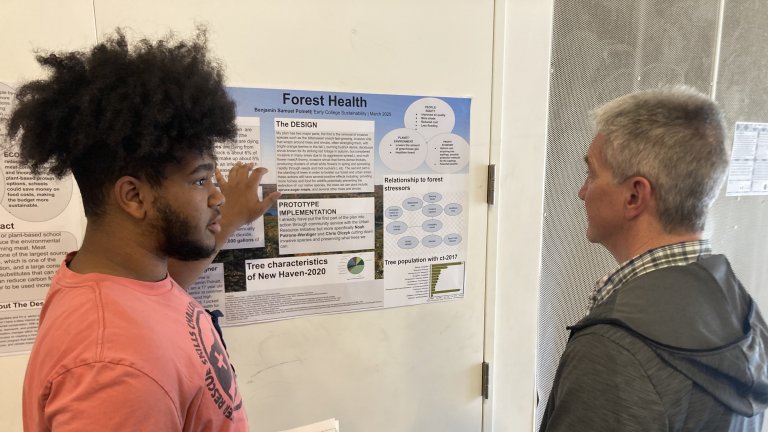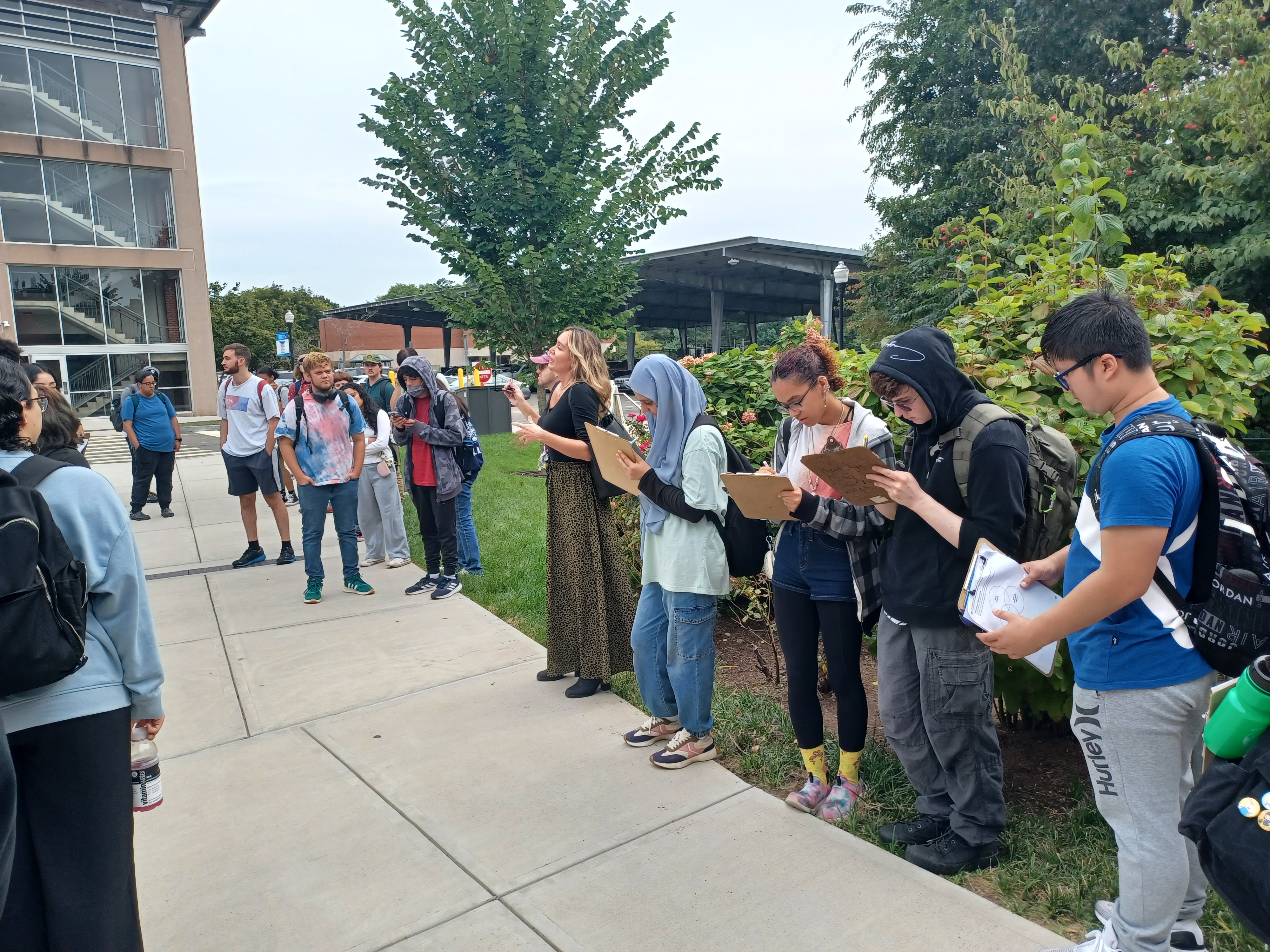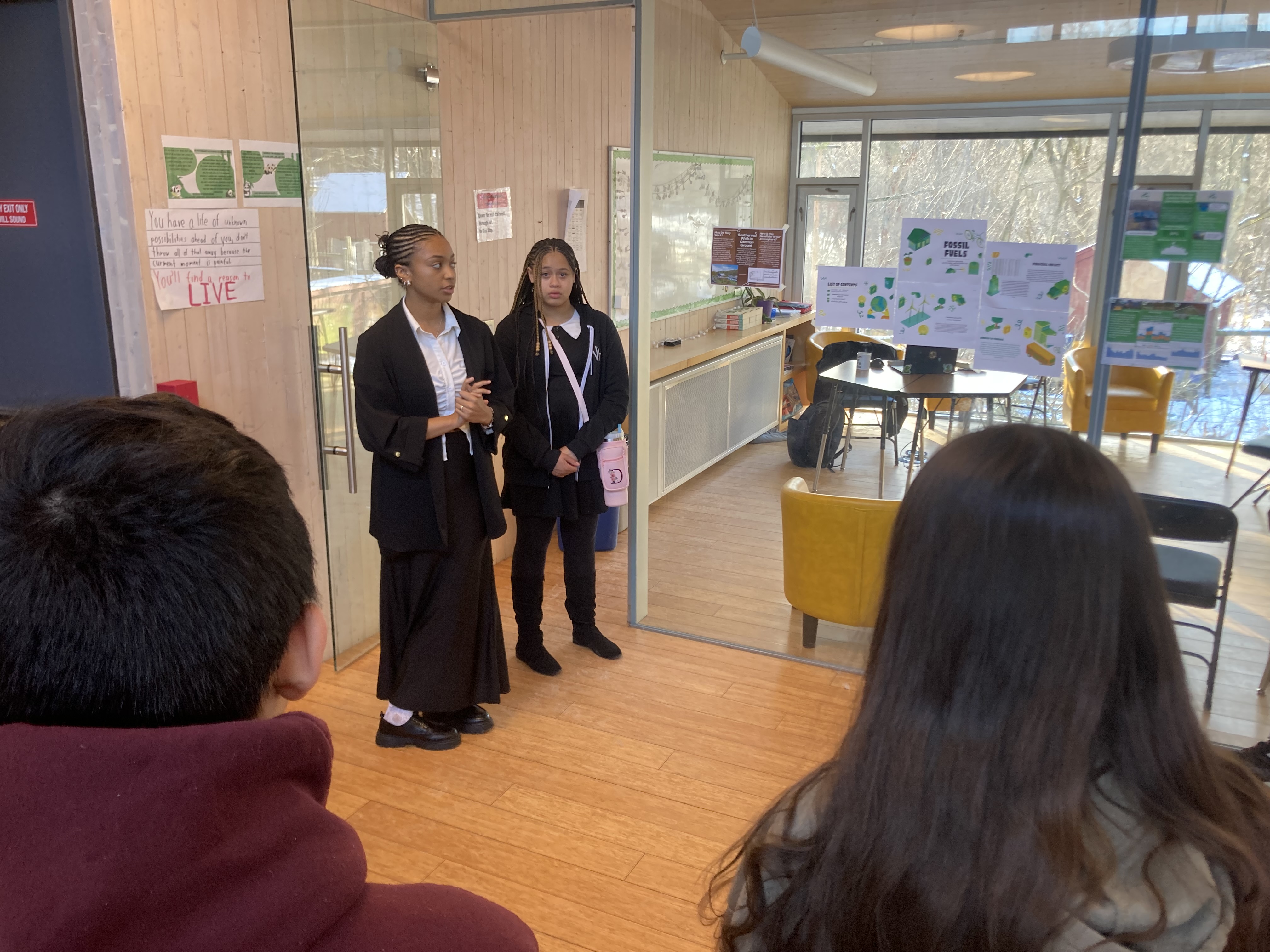
In Common Ground High School's Sustainable Design course, students are charged with evaluating how their school building impacts their community's health and sustainability -- and then use this analysis to propose and implement strategies for improving environmental health. With support from the Green Schools National Network and a grant from the EPA Healthy Communities program, Joel Tolman, Jeremy Stone, and other Common Ground staff worked to create a ready-to-share toolkit that will help other schools engage their students in similar healthy schools projects. Students' work in the course, and the toolkit, are organized using the 4PBL model, developed by Jenny Seydel and Gerald Lieberman -- . where students encounter an engaging Phenomenon, explore how it shows up in their local Place, take on a meaningful Project for a public audience, and then use their knowledge to propose and implement solutions to real-world Problems.
In this practice toolkit, you'll find an overview of this 4PBL experience, along with resources -- curriculum modules, data collection tools, sample student work, blog posts, and photos from the course -- designed to help other schools and educators engage in environmental problem-solving work. Access a 4PBL curriculum toolkit (google docs).
Phenomenon: Buildings Can Make Us Healthy (or Sick)
In this course, students engage with a relevant, real world phenomenon: We spend a huge amount of our time in buildings – schools, organizations, businesses, homes. These buildings can make us healthier – physically, psychologically – and can help us do our best work and be our best selves. Buildings can also make us sick, get in the way of our work and learning, prevent us from showing up fully and achieving our full potential. There are concrete things we can do – as young people, and as a community – to make the buildings we spend time in healthier.
4PBL starts with an Immersion Experience: A “Cold Read” of Environmental Health In Our Building: As part of exploring this phenomena, students to look around the classroom/space where the group is meeting: What about this space makes you feel healthy, well, able to do your best work and be your best self? What feels unhealthy, or gets in the way of doing your best work and being your best self? Together, they generate a list of features that can promote our health or make us feel less healthy. Then, they conduct an initial walk-through/“cold read” of one or more buildings on the school campus.
Place: Diving Into Health At Our School

In the place phase, students take a deeper dive into key texts and their own campus to answer the driving questions they developed through their initial immersion experience.
Students learn more about how their health might be affected by their buildings by exploring and integrating information from a variety of texts. They start with documents that lay out big-picture frameworks that identify key aspects of building health – in particular, this Healthy School Buildings issue brief from the Harvard School of Public Health, which offers a helpful organizing framework for students’ ongoing investigations.
Alongside these texts, students mobilize their place as a learning laboratory. They conduct a walk-through assessment of their campus – evaluating the health of buildings across the range of foundational building blocks (indoor air quality, welcoming and safety, water quality, etc.). They also meet the experts who know their building best (buildings and grounds staff), visit other buildings that model environmental health, and look at data.
Project: Auditing Key Building Blocks of Environmental Health

After an initial exploration, students work in small project groups to research, gather data, document, and present on specific foundational building blocks of healthy buildings, such as acoustics, indoor air quality, thermal comfort, or access to natural daylight).
Phase 1: Background Research: Through guided research, students learn key scientific principles, common measurement methods, and the evidence linking this variable to student health and academic performance. They build a section of their presentation slide deck sharing their research, including a glossary of key terms, and how their building features impact health to share with theirclassmates, other students, and staff.
Phase 2: Gathering & Analyzing Data: Together, students: (1) Analyze data that already exist – e.g., our school’s electric bills, (2) gather data directly from their building, and (3) analyze both quantitative measurements and qualitative observations to identify patterns and issues.
Phase 3: Documenting Problems & Solutions. Using the data they’ve gathered, groups will identify and describe the major challenges their campus is facing related to their environmental health issue. At the same time, they describe the things we are already doing right – the ways we are working together e.g., low-VOC materials, anti-idling policies, HVAC improvements enacted in response to COVID, daylighting in their classrooms. These problems and already-existing solutions become slides in each group’s presentation deck.
Phase 4: Presenting Audit Results. Finally, students develop and share a presentation sharing why and how their group's aspect of the built environment contributes to health, what the data tell us about building health, problems we need to solve in order to create a healthier environment, and solutions and best practices already in place in their building. This presentation can take a few different formats:
- A series of videos that spotlight different aspects of environmental health and sustainability.
- An in-classroom presentation to classmates and key stakeholders and decision-makers who can be allies in making tbuilding healthier.
- A healthy environment walking tour of their campus for students and staff.
- A set of lasting interpretive signs (see an example) that educate all visitors to the building about environmental health, and what the school is doing to protect it.
Problem-Solving: Designing and Testing Solutions to Healthy Building Challenges
.jpg)
Having become experts in their chosen foundation of healthy buildings, collected real-world data, and analyzed successes and challenges, students are now tasked with moving from diagnosis to action. This problem-solving phase requires them to apply the principles of design thinking to propose and implement innovative, feasible, and sustainable solutions. Students must consider not only what needs to be done, but also who can do it and what constraints (e.g., budget, time, resources, school policies) might impact implementation. student proposals will address two distinct levels of action: individual/classroom efforts and broader community-based initiative.
Community Need: Help schools and organizations by proposing and implementing a prototype solution to a building-level challenge.
Community Partner(s): Design professionals, facilities managers, partners at local buildings that model environmental health practices.
Authentic Audience: School/organization management team/board members, students beyond the classroom, community partners named above.
Action: Students Design and implement, on a pilot basis, a proposal to improve environmental health on their campus. They share their proposals through a digital design poster that will print for display (in collaboration with teachand ers, students may pick an alternative format). The final poster will include:
- A visual representation and written description of their environmental health proposal – describing how it will work, and proving how it cares for the ENVIRONMENT, builds EQUITY, and works for the ECONOMY.
- An evidence-based description of the problems their design solves, and how it will contribute to our goal of improving environmental health.
- Data and graphs, including results from an experiment implementing a pilot of their proposal.
- Sources/acknowledgements.
Designs should also demonstrate writing and visual design skills -- edited to engage their audience, express ideas clearly, and follow standards for professional writing.
See sample posters focused on traffic safety and walkability, reducing food waste, and lighting.
Check out the resources below for ready-to-use curriculum modules, background on the 4PBL model, and a sample environmental health walk-through tool.
